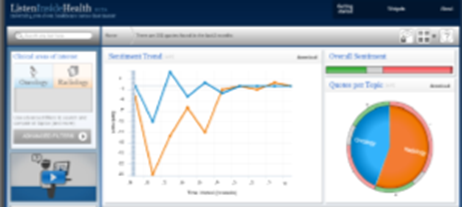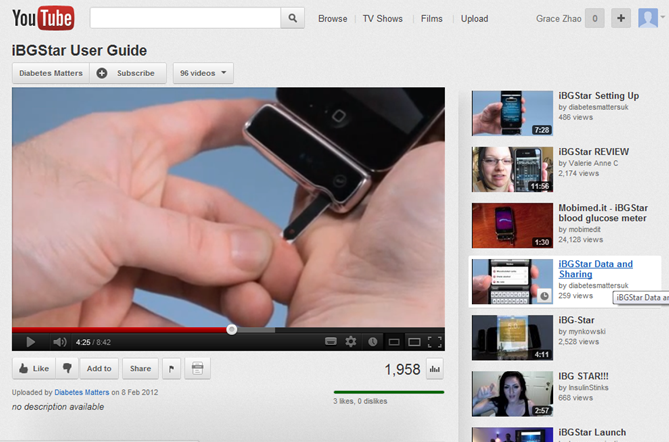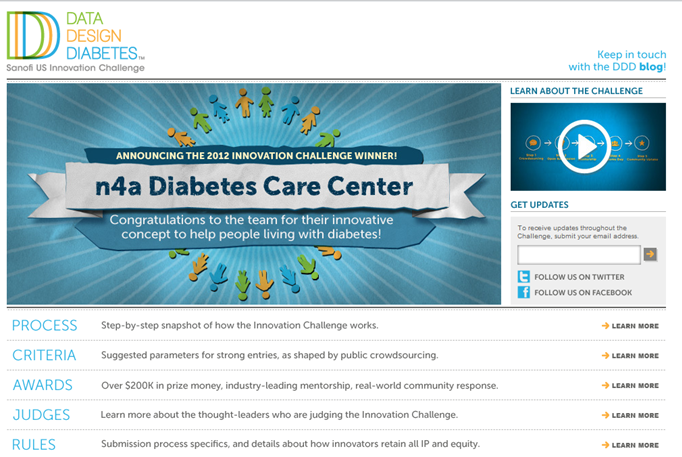Want to Create Brand Loyalty? Think Beyond Multichannel Marketing and Innovate!
Multichannel marketing is one of the hottest topics in pharma marketing now...

A recent LinkedIn poll from pharma digital guru Len Starnes (ex Bayer) asked ‘Will pharma marketing become de facto multichannel marketing in the future?’. Over 200 voted with an overwhelming number of respondents sharing the opinion that it will happen ‘within five years’.
I’m in absolute agreement that multichannel marketing is fundamental to any successful marketing strategy, but I’d like to pose a slightly different question: where do you think multichannel puts your business on the brand loyalty scale in the long term?
The key premise of multichannel marketing is about reaching your customers through their preferred channels, and delivering your messages in a seamless way across those channels, so that every touch point contributes towards a consistent, positive and memorable experience for the customer. An effective multichannel strategy maximises the synergy between channels and, in so doing, the marketing return on investment.
But…if all of us are going about satisfying our customer’s needs by meeting their multichannel preferences (which are more or less the same if we are competing for share of the same customer segment), what is going to set you apart from your competition?
At the end of the day, it’s the preference that makes people choose, and be loyal, to one business over another.
My view? Multichannel marketing gives you brand ‘parity’ - it’s the hygiene factor. Innovation, on the other hand, gives you brand ‘preference’ - it’s the game changer.
By innovation, I mean it in both a marketing and a product sense. Marketing Innovation through focusing on creative and relevant ways to reach, engage and build relationships with customers, and Product Innovation, by fully leveraging insights gathered from marketing to drive new product innovation that addresses unmet customer needs.
And digital plays a critical, enabling role in this. It allows us to innovate in ways previously not possible. It allows for more customer-centric, open and collaborative innovation.
We have, more than ever before, rich, real-time data that allows us to truly listen to and understand our customers as individuals - from the larger social media channels like Facebook and Twitter, to more niche physician and patient-focussed social networks. Furthermore, technologies like fast broadband connections, smart phones, video conferencing and remote monitoring technologies enable us to connect with our customers wherever they are, and whenever these connections are needed.
Forward thinking companies are already innovating and reaping the benefits on brand loyalty. Here are a few excellent examples I’ve come across.
Philips Healthcare launched ‘ListenInsideHealth’ in early 2011. It’s a social media listening tool for HCPs, allowing them to tap into patients’ discussions of their healthcare and medical treatments. This addresses HCP’s needs for insights into patient experiences and sentiments. In addition, its ‘Innovations In Health’ LinkedIn group further supports HCPs by providing a community for them exchange views and experiences with their peers.
The impact has been very positive. Phillips recorded a company Net Promoter Score of 51 (50 is excellent), whilst ‘InnovationsInHealth’ is the second largest healthcare group on LinkedIn (60k members as of today). It is also a very engaged community with 30% of its members visiting monthly, and 58% of them with job titles indicating decision making authority. Though there doesn’t seem to be much in the way of published results on ListenInsideHealth yet, it undoubtedly provides valuable insights for product, services and treatment innovation for Philips Healthcare, and stands out as a customer relationship building tool that address a genuine customer need, through creative, and customer-centric thinking.
ListenInsideHealth- listening tool for HCPs
Sanofi’s iBG Star is a glucose monitoring device that works with Apple’s iPhone and iPod Touch devices. It’s a small unit that allows diabetic patients to take blood samples by finger prick, then analyses their glucose level. The innovative part of this device is that it plugs into an iPhone or iPod Touch, and through its free Diabetes Manager iPhone app, allows patients to track, view, and analyse accurate information whenever, and wherever they are. The information can be shared (emailed/ printed) with HCPs, allowing better-informed, collaborative decisions.
The iPhone app has a 4.5/5 star rating on iTunes. A trial of the device among patients showed 72% of them found it better in terms of functionality than their previous BG monitor, and 94% of patients and diabetes specialist nurses felt the quality was better. The iBG Star satisfies patients’ needs to manage their condition on-the-go and their desire for the latest, well designed technology.
Another great Sanofi example shows how a company can drive product innovation by fostering a culture of innovation, and develop internal skills and capabilities through digital. In 2011, Sanofi launched a series of initiatives including the Data Design Diabetes Innovation Challenge Contest in the US (to boost development of apps/tools), the Sanofi Digital Community (internal cross-function digital knowledge sharing), the Senior Management Business 2.0 Community (a website with mobile version to accelerate information sharing for innovation), the Business Innovation Forum (webinars for internal and external experts to share best practices on innovative and strategic topics), LINKS affiliates worldwide training programme (develop and accelerate innovation knowledge) and the Industrial affairs innovation awards (for employees to submit an award entry for innovations in manufacturing plants around the world).
The results speak for themselves. There were 350Entries into the 2011 Industrial Affairs Innovation Awards, with Sanofi’sUS diabetes VP proudly announcing that the 2011 Data Design Diabetes Innovation Challenge “yielded ideas in six months that would have taken four to five years to develop at ten times the cost”. Sanofi also launched a string of innovations across the globe in 2011, including, iBGStar (US, UK), Connecting Nurses, a social network (global), ‘Data Matrix’ bar code product information (France), Virtual promoter (Russia), The African Pain Club e-Training (Africa), and Multiple Sclerosis netnographics (FR, CA, US).
So whilst multichannel marketing is justifiably a hot topic in pharma right now, to create sustainable, measurable shifts in brand loyalty, focus on innovation. Use customer and market insights to develop creative and relevant ways to engage with customers, and fully leverage insights gathered from marketing to identify and develop product innovations that address genuine unmet customer needs. Multichannel marketing is not the end, it’s just the beginning.



